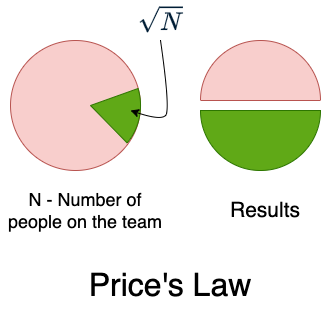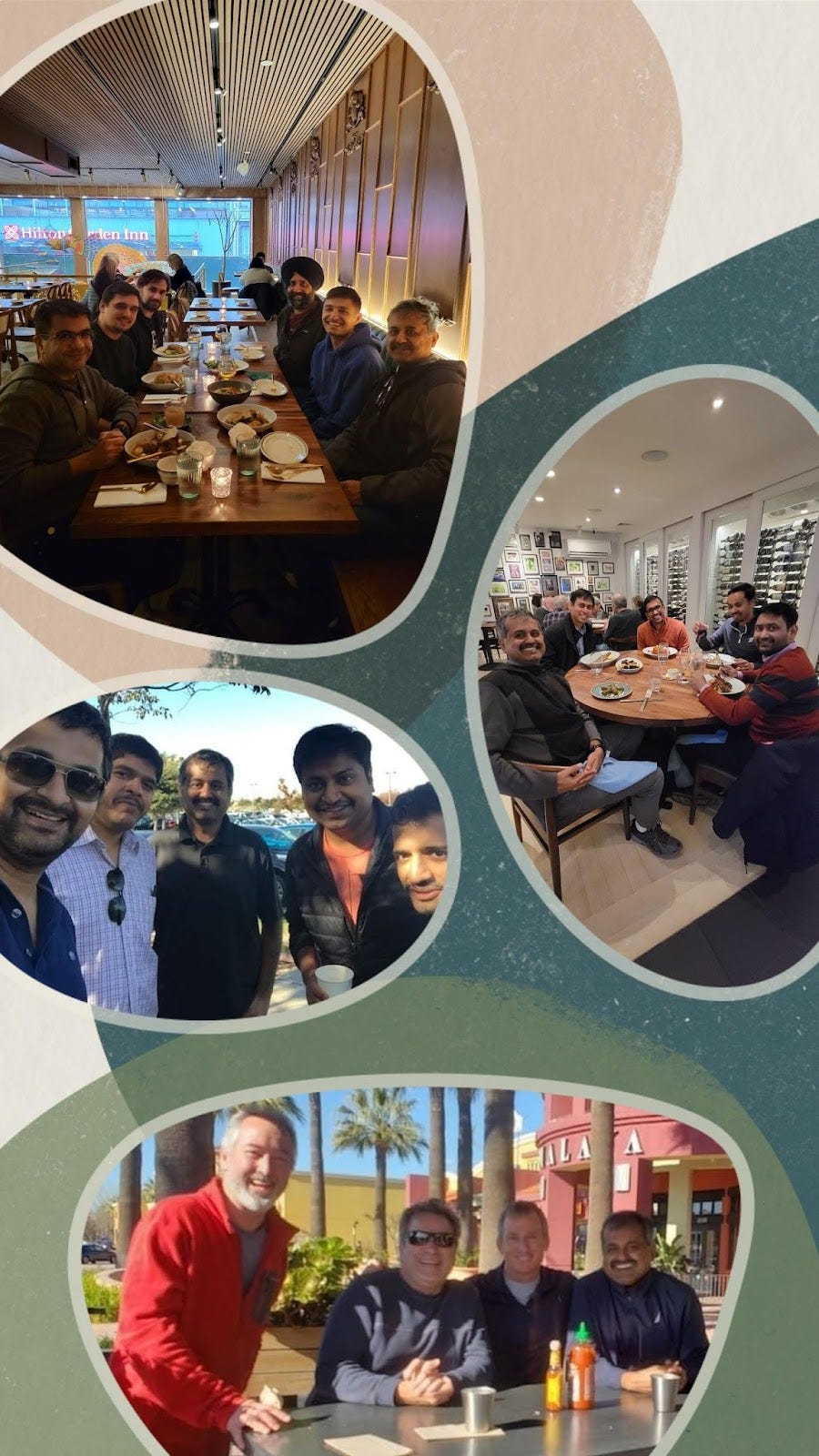Price's law: The Secret Sauce in the Two-Pizza Rule
We ordered pizza twice last month, and ever since, I’ve been bombarded with posts about two-pizza teams on LinkedIn and other sites. In a previous blog post, I wrote about the secret sauce of high-performing teams. I’ve been familiar with the two-pizza rule for a while, even before I worked at Amazon—though I didn’t call it a two-pizza team back then.
I’ve always been curious about how this concept came to be. Recently, during a leadership course, I encountered Price’s Law, and it struck me how closely these ideas might be connected. That realization sparked the idea for this post.
Two-pizza Teams
Two-pizza teams are teams small enough that they can be fed with two pizzas. While one can debate the size of the pizzas or the number of slices some might devour, these teams typically consist of 6–8 individuals. Jeff Bezos introduced the two-pizza rule at Amazon to encourage small, purpose-driven teams. Smaller teams help reduce chaos and bureaucracy, enable easier coordination, and maintain a sharper focus on their goals.
PIZZA Effect
One way to understand the effectiveness of two-pizza teams is through what I call the PIZZA Effect.
Here are the traits that make these teams successful:
P - Purpose-Driven
A two-pizza team thrives when aligned around a clear and well-defined purpose. Many small service teams are highly motivated and committed to a specific cause. A strong purpose helps each team member understand why their work matters and what they are driving toward.
I - Independent
These teams are autonomous and self-sufficient, capable of making decisions and delivering results without constant oversight. Independence empowers team members and fosters accountability.
Z - Zero Redundancy
Efficiency is key. Roles and responsibilities are clearly defined, minimizing duplication of effort. Each member’s skills complement the others, ensuring everyone adds unique value. In one of my previous projects, I worked with a small, powerful team where each member specialized in a different area. There was no overlap, and together, we made huge strides and delivered in record time.
Z - Zealous Collaboration
Effective two-pizza teams excel at seamless communication and collaboration. In my experience, a lot of decisions were made during coffee breaks, and new features were implemented before the next happy hour. This fluid collaboration accelerates progress and builds strong camaraderie.
A - Adaptive
Flexibility is vital. Small teams can quickly adapt to changing requirements, new technologies, or unexpected challenges. The size makes them agile, allowing them to respond dynamically to change.
Price’s Law
Derek John de Solla Price, a former Yale University physics professor, analyzed patterns in scientific publications and observed a striking trend. He found that within any given field, a small group of scientists or subject matter experts produced the majority of the published work. Specifically, he noted that roughly half of all publications came from a number of contributors equal to the square root of the total number of contributors.
While Price’s Law is a theory, it reflects a widely observed phenomenon across various domains. For example, the Mag-7 companies generate the bulk of profits in the S&P 500. Similarly, a small percentage of the population controls most of the world’s wealth. When applying Price’s Law to engineering teams, 50% of the work tends to be done by the square root of the total number of team members. As teams grow, a smaller percentage of individuals contribute the majority of the value. Beyond 10 people, productivity often diminishes. Larger team sizes can lead to inefficiencies, stifling innovation and growth, while over-relying on a few key players. This dynamic can result in burnout among high performers, ultimately increasing turnover.
Price's Law offers a valuable perspective on designing effective tech teams. While not a rigid rule, it advocates for keeping teams small, fostering communication, and recognizing top performers' contributions. This philosophy likely inspired the Two-Pizza Rule. The next time you're considering expanding your team, think about the price of adding members. Focus on hiring individuals who complement your team’s existing skills. By embracing this approach, you can build a thriving organization where everyone contributes meaningfully and the company scales effectively.
Conclusion
As 2024 comes to a close, I’ve been thinking about the two-pizza teams I’ve been part of throughout my career. Working with the Broadcom crew in the early 2000s still brings back great memories. Michael would nervously watch as we brought up our software stack to verify the Fibre Channel chip fresh from the foundry. Kean, Dave, Mark, and I were completely locked in during that time.
Later, I switched to the mobile team and spent years working with Nikhil, Pradeep, Sandeep, Mamatha, Negar, and a few others. We built everything from BootROMs and Linux drivers to the Android stack. Akash joined us at Amazon where we continued to work on Kindle before we took different paths. I also had the chance to work with more small, high-performing teams at Amazon on Kindle Fire, EC2 and the Beehive Edge teams.
The last three years were challenging, but as fate would have it, I ended up at Peloton during Covid. The Content, ML, and Leaderboard teams there were all two-pizza teams—focused and consistently delivering high-quality services.
Reflecting on these experiences with two-pizza teams reinforces the importance of Price's Law. Small teams create a sense of ownership, encourage open communication, and get things done. It’s a principle that I’ll carry forward.






